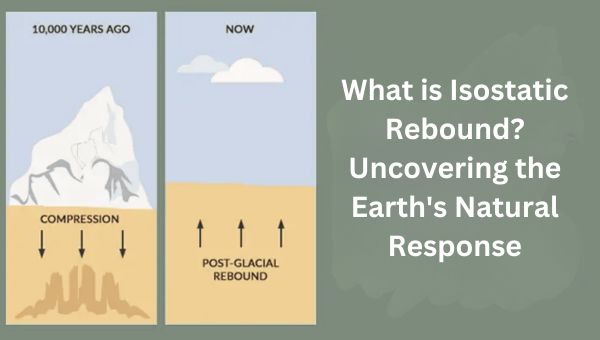Physical Address
304 North Cardinal St.
Dorchester Center, MA 02124
Isostatic rebound is a fascinating process that occurs when the Earth’s crust responds to the removal of weight, such as melting ice, by gradually rising back to its original position.
This phenomenon is also known as glacial isostatic adjustment or post-glacial rebound. Understanding this natural process is essential because it can affect sea levels, land masses, and even the planet’s shape.
When massive ice sheets accumulated during the last Ice Age, the enormous weight caused the Earth’s crust to flex and bend downward. As the ice began to melt, the pressure on the crust reduced, allowing it to rebound slowly. This process can take thousands of years and is still happening today, particularly in regions covered by ice sheets.

Isostatic rebound has some fascinating effects on our planet. For example, it can lead to rising land levels, altering coastlines, and impacting ecosystems. Additionally, the rebounding can cause changes in the Earth’s overall shape, known as geoidal deformation.
Understanding isostatic rebound is crucial for accurate sea level measurements and land surveying, which help us better comprehend Earth’s geological history and its ongoing changes.
10 Asthenosphere Facts: Exploring the Earth’s Mysterious Layer
Isostatic rebound, also known as post-glacial rebound, refers to the rise of the Earth’s crust following the removal of an overlying weight, such as a melting glacier or the retreat of an ice sheet.
While it may not be something we think about daily, it’s an essential process to understand as it impacts geological and environmental factors. Let’s delve into what happens during the isostatic rebound and why it’s crucial to consider.
First and foremost, when the weight of the ice is removed, the crust tends to rise back to its original position slowly. This process is called elastic rebound. It’s essential to note that the timescale of isostatic rebound can span thousands of years, so it’s not something we’ll notice in our lifetimes.
During the process of isostatic rebound, there are several key factors to be aware of:
To grasp the concept of isostatic rebound better, it’s helpful to examine some real-world examples:
The isostatic rebound is the gradual process in which the Earth’s crust returns to its original position following the removal of overlying weight, such as ice. With significant implications for geology and environmental factors, it’s essential to understand this phenomenon.
As global warming continues to impact the planet, monitoring isostatic rebound and its effects on coastal regions cannot be overstated.
Carbon Dating Explained: Method, Uses, Limitations & Facts
Isostatic rebound, a fascinating geological process, has piqued the curiosity of many researchers and scientists. In regions globally that have experienced glaciation, this natural phenomenon has significant implications for land elevation, sea level, and our understanding of Earth’s dynamic history.
I’ve highlighted critical points about an isostatic rebound in this article:
A key factor to consider is the variable rate of isostatic rebound. In some regions, it occurs faster than in others. Here’s a table showing the rate of uplift in different parts of the world:
| Location | Rate of Uplift (mm/year) |
|---|---|
| Sweden | 9.0 |
| Canada | 6.0 |
| Alaska | 15.0 |
As we grapple with the effects of climate change, it’s crucial to consider isostatic rebound. Since it impacts our coastal infrastructure, we must anticipate changes and adapt our strategies accordingly. I hope we can build a resilient future for our planet and its inhabitants by understanding this unique geological process.